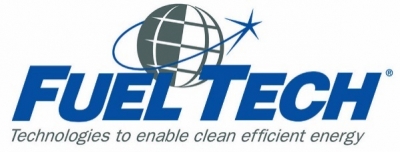Reducing difficult-to-remove deposits on various heat transfer surfaces throughout new and converted biomass-fired boilers
Firing biomass-containing fuels often presents operators with significant deposit formation and corrosion challenges. Deposit formation (i.e. slag and fouling) and corrosion rates tend to be greater when firing biomass than with traditional fossil fuels (i.e. coal, pet coke, etc.) owing to the relatively low energy density, high moisture/volatiles content, high alkali metal (e.g. Na, K) content, and presence of chloride in biomass.
Although the ash content of biomass is lower than coal ash content, the lower energy density (i.e. kJ/kg, Btu/kg) and higher moisture content present in biomass increases fuel consumption required to generate an equivalent amount of energy as coal. Additionally, the higher moisture and volatiles content in biomass results in different combustion characteristics and resultant burning/temperature profiles than with traditional fuels.
Consequently, biomass-fired boilers tend to experience the formation of difficult-to-remove deposits on various heat transfer surfaces throughout the boiler (e.g. superheat, reheat, economizer, etc.). Ash deposition reduces heat transfer performance, result in pluggage of gas flow paths (e.g. bridging adjacent heat transfer tubes), and large deposits can fall and cause significant damage to lower boiler sections. The presence of alkali metals and chlorides in biomass also result in increased metal corrosion rates within the boiler, particularly underneath molten slag and fouling deposits.
This webinar will discuss slag and fouling formation in biomass-fired boilers, corrosion mechanisms, and treatment approaches. Fuel Tech employs state-of-the-art computational fluid dynamics (CFD) modelling methods to target chemical additive application to problem areas within the boiler. Targeted application results in the relatively low chemical application rates and positive return-on-investment. Effective chemical additive application approaches will be discussed. Additionally, performance data from deposit and corrosion treatment from several units will be presented.
Presented by

Piers de Havilland,
Director, Marketing & Business Development
Mr de Havilland has worked with Fuel Tech since 1989 initially involved with the company's SNCR product demonstrations prior to SNCR being recognised as a suitable deNOx technology, later working with SCR and TIFI as the Fuel Tech product lines have increased. Mr de Havilland earned a HND in Mechanical and Manufacturing Engineering in 1992 and since then has worked on multiple SNCR and TIFI applications in the United States, India and throughout Europe.

Ian Saratovsky, Ph.D,
Director – Chemical Product Management
Dr. Saratovsky joined Fuel Tech as Technology Development Manager in 2012. Dr. Saratovsky earned a Doctorate in Inorganic Chemistry and Environmental Engineering from Northwestern University in 2006 and completed a post-doctoral fellowship at Oxford University in 2007. Since 2008, Dr. Saratovsky has worked on developing low-capital cost solutions to improve air quality and enhance combustion efficiencies in power generating and chemical recovery units.
About Fuel-Tech srl
For over 25 years, Fuel Tech, Inc. has cost-effectively treated over 200 boiler for slag/fouling deposits and corrosion. Specifically, we have successfully treated slag/fouling deposits and corrosion in boilers firing biomass (i.e. wood, agricultural waste, animal waste, hog fuel, etc.), waste-to-energy (WTE), refuse derived fuel (RDF), municipal solids waste (MSW), as well as coal and petroleum coke-fired boilers. Fuel Tech’s treatment programs rely on application of small quantities of chemical slurries, such as slurried magnesium hydroxide, to react with deposits, render them friable and easier to remove with existing mechanical deposit removal equipment, such as sootblowers, impulse cleaners, rappers, and sonic horns. Increasing the deposit removal efficiency of existing sootblowers or other mechanical equipment prevents unit pluggage, maintains optimal heat transfer, and minimizes under-deposit corrosion. Fewer shutdowns and outages for boiler cleanings, and easier-to-remove deposits can result in significant cost savings for operators.





